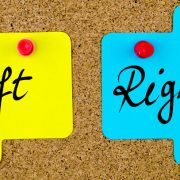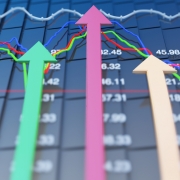“Live long and prosper” is a traditional Jewish blessing made famous by Mr. Spock of Star Trek fame. And this simple greeting can be broken down into two parts, vitality and productivity. Of course there are many factors that contribute to both, some of which cannot be controlled, such as heredity and violence, and many that can be. This is because the human organism is capable of transforming itself, both its internal physical and its external creative capabilities.
Finding The Healthy Energy Zone
There are a number of physical adaptations that people can train for. They range from increased strength, stamina, and flexibility to elite athletic performance. Many people simply prefer to feel good and look better, and that’s big, because it’s about small accomplishments and focus. A marvelous compass to guide people on this journey is a heart rate monitor. It provides instant feedback regarding physical effort, calories burned; and with some knowledge of metabolism, the energy source being utilized. For most people, reducing body fat and increasing endurance will lead to many other health benefits.
According to the book Slow Burn by exercise physiologist Stu Mittleman, the healthiest energy producing states are found in three heart rate zones. They are the “mostly aerobic pace,” the “speedy aerobic pace,” and the “most efficient pace.” All three utilize fat as the primary fuel source. The only difference is the percentage of sugar calories being included. For everyone, a fat burning focus improves metabolism, body composition, immune systems, and a sense of vitality. Using the heart rate monitor to maintain a mostly comfortable energy zone will help you live the one life you have to its fullest.
Discovering The Economic Way
The same thinking applies to achieving lifestyle goals that require money. In this case, it’s about having a vision about future cash flow needs, setting priorities, and crafting a plan that will achieve them with a high level of confidence. The variables include age and life expectancy, saving habits, financial resources, and spending goals. In other words, balance the things we can control against the uncertainty of the future. And the plan must be flexible; circumstances and priorities will change, and investment returns will be volatile. It means applying economics and thinking like a business owner.
The economic way also avoids bad decisions. In the world of personal fitness, a no pain no gain mindset, and high intensity interval training, are probably bad decisions for most people. In the world of personal finance, bad decisions may involve maximum risk tolerance, market forecasts, faulty return projections, beating the market, and staying the course. The economic way for both would answer the following questions. Does this anticipate needs? Is it easy to use and understand? Is it reliable? Does it lead to the good life? In other words, a strenuous workout or beating the market may sound good, but they don’t satisfy long-term personal goals.
Easing In To The Financial Comfort Zone
In economics, a reliable philosophy respects the evidence of spontaneous order, which can’t be predicted or managed. In finance, it respects efficient markets because investment returns can’t be predicted or controlled. A reliable investment strategy is grounded in the uncertainty of the future and the variability of actual returns. In fact, the actual sequence of returns has a greater impact on lifestyle planning than any strategy. That’s because life happens: people invest during their working years and spend during retirement years. If it wasn’t for that, the asset allocation decision would be the primary factor for success or failure, notwithstanding undisciplined spending.
So how do investors give themselves a high probability of living their lives to the fullest without unnecessary sacrifice or risk? Like an entrepreneur, they acknowledge that reality exists. They have a strategy for the possibility of changing market forces, and their effect on achieving important goals. For investors, it means taking into account all possible sequence of return scenarios, balancing them with current and future spending needs, and making trade-offs based on their unique values.
The Stress Test
This is not about predicting the future. Its about anticipating possibilities, achieving balance between competing priorities, and capacity for risk. And it means being flexible. The heart rate monitor is a tool to that helps the user find the optimal energy zone for long-term health and vitality. Likewise, the Monte Carlo simulator is a tool that will help the user find the optimal confidence level for realizing priorities. By performing 1000 random simulations, with all possible investment outcomes, the engine will calculate the likelihood of meeting or exceeding all lifestyle spending goals. This Stress Test can be performed at any time. And many what-if scenarios can be created, with new priorities, changing circumstances, and different trade-offs. This makes the process very dynamic and easy to understand.
Because flexibility is key, spending priorities and risk capacity are assigned ideal and acceptable levels, and there is always a fall back plan. Of course none of this is foolproof. Physical health is affected by a multitude of forces. And so is prosperity, especially by physical health. All the more reason to take a long view, embrace reality, be flexible, and live with confidence. As the ultimate man of reason Mr. Spock advises, live long and prosper.













